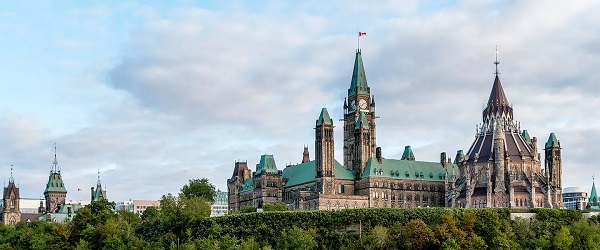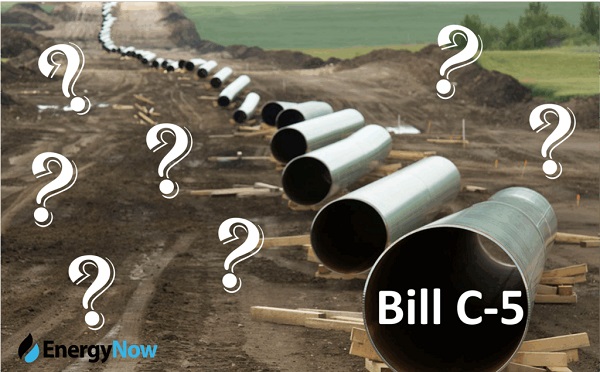Frontier Centre for Public Policy
Money Under False Pretences?
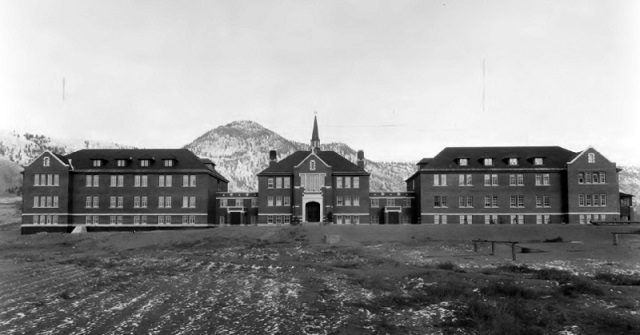
From LifeSiteNews
When is a hoax, not a hoax? They knew the study revealed ‘anomalies,’ not bodies.
A recent article appeared in the Western Standard admonishing conservatives for using the term “hoax” when referring to the Kamloops claim — namely the MAY 27, 2021 claim — that the remains of 215 former students had been discovered on the grounds of the local residential school.
The author of the article noted that many former residential school students might be offended by the use of the term. I agree with him that innocent people should not be unnecessarily hurt by writers trying to make a point. Everyone agrees that many people were hurt by their residential school experiences. That is no hoax.
However, what the author might not be aware of is the fact that what was claimed at Kamloops was patently false. It was a clear example of misinformation. That May 27, 2021 announcement claimed that the “remains of 215 former students” had been found.
This was false. No such “remains”, “bodies”, “graves”, or “mass graves” had been found.
And none have been found since that claim was first made. Only soil “anomalies”, were detected. “Anomalies” are basically radar signals that could be from rocks, tree roots, or other old excavations that have nothing to do with graves.
Thus, the people who made the claim that the “remains of 215 children had been found” were making a claim they knew was false. Although they have refused to release the ground penetrating radar report made by Sarah Beaulieu, we know with absolute certainty that Beaulieu reported finding only anomalies and not “remains”because Beaulieu said so.
She also said that only excavation would show what those anomalies were. And the people making the claim have refused to do any excavation.
“Anomalies” and “human remains” are two entirely different things. There is no excuse for Kamloops Chief Roseanne Casimir and her colleagues announcing that human remains had been found, when only anomalies, that could be from many different sources, had been detected.
On the basis of this false claim the claimants obtained $8 million from the federal government. That money may or may not have been spent — we don’t know because they won’t tell us.
That false Kamloops claim, and the $320,000,000 the Trudeau government was foolish enough to promise, then inspired copycat claims from other poor indigenous communities. Instead of focusing on their many very real problems, those communities are now engaged in a pointless exercise searching through old cemeteries for evidence of imagined secret burials. That original Kamloops claim has done a lot of harm.
So, the use of the term “hoax” might be offensive to some, but what should we call an application for $8 million from the federal government based on information that the applicants knew to be false? Perhaps there is a more polite term to describe deliberately obtaining money by false pretences.
Maybe “a patently false claim?”
Either term is probably accurate. Just to be clear — the people making this claim knew they had not discovered “remains.”
Despite that, they repeated their misinformation far and wide. And it took three years for those same leaders to formally admit that only “anomalies” — and no remains — were found.
While it is entirely possible that many, or even most, of the people in that Kamloops community believed, and still mistakenly believe, that the remains of 215 children had been found, the point is that the leaders who made that claim knew with absolute certainty when making the claim that only “anomalies” and no remains, bodies, or graves, were found. They used that false information to fool government officials into giving them $8 million in tax dollars.
Whether that is a “hoax” or a “patently false claim” I don’t know. But it is certainly one or the other.
Readers wanting to take a deep dive into the false Kamloops claim and its ramifications might want to read “Grave Error — How the Media Misled us” edited by Tom Flanagan and Chris Champion. Disclosure: I am a contributor to the book.)
So, if the point of the author is to stress the need to avoid unnecessarily offending innocent people who had a rough time at residential school, I completely agree with him.
However, if the suggestion is that the people who are responsible for making a false claim — a claim has cost this country billions of dollars, a humiliating downgrading of our international reputation, and internal division for decades to come, I do not.
The people responsible for creating this national and international mess should be held to account. We shouldn’t care a whit if they are offended by any particular term we use to describe their dishonest behaviour.
Those people responsible for keeping the “hoax”, or “patently false claim” alive are both indigenous and non-indigenous. They include not only the senior indigenous leadership, but senior non-indigenous leaders, like Justin Trudeau and Marc Miller. They include incompetent journalists . They also include a spineless RCMP leadership that has failed completely in its responsibility to investigate and report to the Canadian public.
As for those people the author refers to who are suffering from their residential school experiences, surely it can’t be helpful for their leaders to promote baseless stories about murderous priests secretly burying 215 indigenous children? Surely such wild stories — stories that have no credible evidence to support them — can only inflame their feelings of victimhood, fomenting church-burning rage among the less sophisticated. indigenous people? They deserve better than that from their leaders.
All Canadians deserve better from our elected leaders.
If the people responsible for obtaining $8 million from taxpayers on the basis of this false claim find themselves in a courtroom it will be up to the presiding judge to choose the appropriate terms to describe their behaviour. The court might use the term “hoax”, “a patently false claim” or perhaps a different term entirely. The important thing is that the opportunists who made these false claims be held accountable for their behaviour.
But those responsible for perpetuating the false Kamloops claim — whatever it is called — should not wait for a court date. They should immediately apologize to all Canadians, but particularly to their own community members whom they misled.
They should also apologize to the people they have falsely accused of horrible crimes — namely the many priests, nuns and teachers, indigenous and non-indigenous, who worked at residential schools, and did their best to provide educations to the indigenous children who needed them.
And a defence lawyer would also probably advise them to begin to work on a restitution plan that would repay the $8,000,000 of taxpayer dollars that they obtained under false pretences.
Brian Giesbrecht, retired judge, is a Senior Fellow at the Frontier Centre for Public Policy
Bjorn Lomborg
The Physics Behind The Spanish Blackout
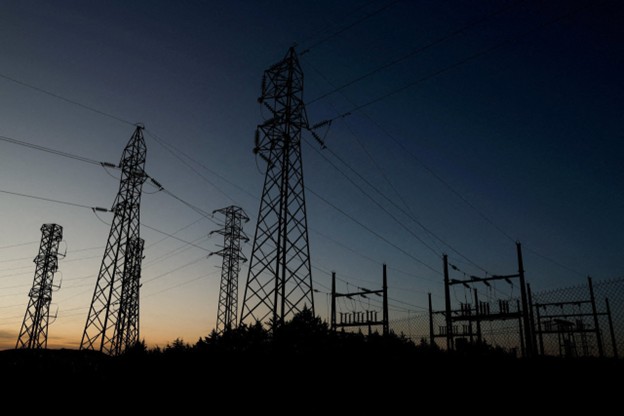
From the Frontier Centre for Public Policy
Madrid knew solar and wind power were unreliable but pressed ahead anyway
When a grid failure plunged 55 million people in Spain and Portugal into darkness at the end of April, it should have been a wake-up call on green energy. Climate activists promised that solar and wind power were the future of cheap, dependable electricity. The massive half-day blackout shows otherwise. The nature of solar and wind generation makes grids that rely on them more prone to collapse—an issue that’s particularly expensive to ameliorate.
As I wrote in these pages in January, the data have long shown that environmentalists’ vision of cheap, reliable solar and wind energy was a mirage. The International Energy Agency’s latest cost data continue to underscore this: Consumers and businesses in countries with almost no solar and wind on average paid 11 U.S. cents for a kilowatt hour of electricity in 2023, but costs rise by more than 4 cents for every 10% increase in the portion of a nation’s power generation that’s covered by solar and wind. Green countries such as Germany pay 34 cents, more than 2.5 times the average U.S. rate and nearly four times China’s.
Prices are high in no small part because solar and wind require a duplicate backup energy system, often fossil-fuel driven, for when the sun doesn’t shine or the wind doesn’t blow. The Iberian blackout shows that the reliability issues and costs of solar and wind are worse than even this sort of data indicates.
Grids need to stay on a very stable frequency—generally 50 Hertz in Europe—or else you get blackouts. Fossil-fuel, hydro and nuclear generation all solve this problem naturally because they generate energy by powering massive spinning turbines. The inertia of these heavy rotating masses resists changes in speed and hence frequency, so that when sudden demand swings would otherwise drop or hike grid frequency, the turbines work as immense buffers. But wind and solar don’t power such heavy turbines to generate energy. It’s possible to make up for this with cutting-edge technology such as advanced inverters or synthetic inertia. But many solar and wind farms haven’t undergone these expensive upgrades. If a grid dominated by those two power sources gets off frequency, a blackout is more likely than in a system that relies on other energy sources.
Spain has been forcing its grid to rely more on unstable renewables. The country has pursued an aggressive green policy, including a commitment it adopted in 2021 to achieve “net zero” emissions by 2050. The share of solar and wind as a source of Spain’s electricity production went from less than 23% in 2015 to more than 43% last year. The government wants its total share of renewables to hit 81% in the next five years—even as it’s phasing out nuclear generation.
Just a week prior to the blackout, Spain bragged that for the first time, renewables delivered 100% of its electricity, though only for a period of minutes around 11:15 a.m. When it collapsed, the Iberian grid was powered by 74% renewable energy, with 55% coming from solar. It went down under the bright noon sun. When the Iberian grid frequency started faltering on April 28, the grid’s high proportion of solar and wind generation couldn’t stabilize it. This isn’t speculation; it’s physics. As the electricity supply across Spain collapsed, Portugal was pulled along, because the two countries are tightly interconnected through the Iberian electricity network.
Madrid had been warned. The parent company of Spain’s grid operator admitted in February: “The high penetration of renewable generation without the necessary technical capabilities in place to keep them operating properly in the event of a disturbance . . . can cause power generation outages, which could be severe.”
Yet the Spanish government is still in denial. Even while admitting that he didn’t know the April blackout’s cause, Prime Minister Pedro Sánchez insisted that there was “no empirical evidence” that renewables were to blame and that Spain is “not going to deviate a single millimeter” from its green energy ambitions.
Unless the country—and its neighbors—are comfortable with an increased risk of blackouts, this will require expensive upgrades. A new Reuters report written with an eye to the Iberian blackout finds that for Europe as a whole this would cost trillions of dollars in infrastructure updates. It’s possible that European politicians can talk voters into eating that cost. It’ll be impossible for India or nations in Africa to follow suit.
That may be unwelcome news to Mr. Sánchez, but even a prime minister can’t overcome physics. Spain’s commitment to solar and wind is forcing the country onto an unreliable, costly, more black-out-prone system. A common-sense approach would hold off on a sprint for carbon reductions and instead put money toward research into actually reliable, affordable green energy.
Unfortunately for Spain and those countries unlucky enough to be nearby, the Spanish energy system—as one Spanish politician put it—“is being managed with an enormous ideological bias.”
Bjorn Lomborg is president of the Copenhagen Consensus, a visiting fellow at Stanford University’s Hoover Institution and author of “Best Things First.”
Business
BC Ferries And Beijing: A Case Study In Policy Blindness
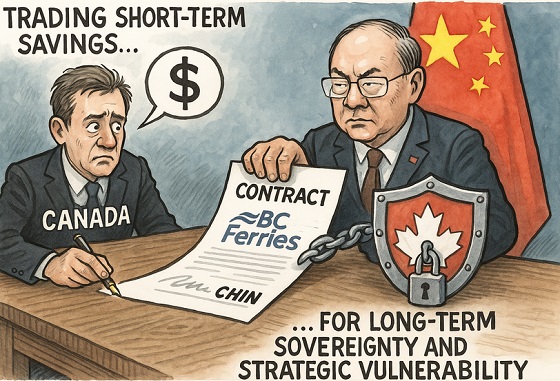
From the Frontier Centre for Public Policy
Scott McGregor warns BC Ferries’ contract with a Chinese state-owned shipbuilder reveals Canada’s failure to align procurement with national security. It is trading short-term savings for long-term sovereignty and strategic vulnerability.
BC Ferries’ recent decision to award the construction of four new vessels to China Merchants Industry (Weihai), a state-owned shipyard under the Chinese Communist Party (CCP), is a cautionary tale of strategic policy failure. While framed as a cost-effective solution to replace aging vessels, the agreement reveals a more critical issue: Canada’s persistent failure to align vital infrastructure procurement with national security and economic resilience.
The situation goes beyond transportation. It is a governance failure at the intersection of trade, security, and sovereignty.
Outsourcing Sovereignty
China Merchants Industry is part of a sprawling state-owned conglomerate, closely connected to the CCP. It is not merely a commercial player; it is a geopolitical actor. In China, these organizations thrive on a unique blend of state subsidies, long-term strategic direction, and complex corporate structures that often operate in the shadows. This combination grants them a significant competitive edge, allowing them to navigate the business landscape with an advantage that many try to replicate but few can match.
The same firms supplying ferries to BC are also building warships for the People’s Liberation Army Navy. That alone should give pause.
Yet BC Ferries, under provincial oversight, proceeded without meaningful scrutiny of these risks. No Canadian shipyards submitted bids due to capacity constraints and a lack of strategic investment. But choosing a Chinese state-owned enterprise by default is not a neutral act. It is the consequence of neglecting industrial policy.
Hybrid Risk, Not Just Hybrid Propulsion
China’s dominance in shipbuilding, now over 60% of global orders, has not occurred by chance. It is the result of state-driven market distortion, designed to entrench foreign dependence on Chinese industrial capacity.
Once that dependency forms, Beijing holds leverage. It can slow parts shipments, withhold technical updates, or retaliate economically in response to diplomatic friction. This is not speculative; it has already happened in sectors such as canola, critical minerals, and telecommunications.
Ordering a ferry, on its face, might seem apolitical. But if the shipbuilder is state-owned, its obligations to the CCP outweigh any commercial contract. That is the nature of hybrid threats to security: they appear benign until they are not.
Hybrid warfare combines conventional military force with non-military tactics (such as cyber attacks, disinformation, economic coercion, and the use of state-owned enterprises) to undermine a target country’s stability, influence decisions, or gain strategic control without resorting to open conflict. It exploits legal grey zones and democratic weaknesses, making threats appear benign until they’ve done lasting damage.
A Policy Void, Not Just a Procurement Gap
Ottawa designed its National Shipbuilding Strategy to rebuild Canadian capability, but it has failed to scale quickly enough. The provinces, including British Columbia, have been left to procure vessels without the tools or frameworks to evaluate foreign strategic risk. Provincial procurement rules treat a state-owned bidder the same as a private one. That is no longer defensible.
Canada must close this gap through deliberate, security-informed policy. Three steps are essential for the task:
Ottawa should mandate National Security reviews for critical infrastructure contracts. Any procurement involving foreign state-owned enterprises must trigger a formal security and economic resilience assessment. This should apply at the federal and provincial levels.
Secondly, when necessary, Canada should enhance its domestic industrial capabilities through strategic investments. Canada cannot claim to be powerless when there are no local bids available. Federal and provincial governments could collaborate to invest in scalable civilian shipbuilding, in addition to military contracts. Otherwise, we risk becoming repeatedly dependent on external sources.
Canada should enhance Crown oversight by implementing intelligence-led risk frameworks. This means that agencies, such as BC Ferries, must develop procurement protocols that are informed by threat intelligence rather than just cost analysis. It also involves incorporating security and foreign interference risk indicators into their Requests for Proposals (RFPs).
The Cost of Strategic Amnesia
The central point here is not only about China; it is primarily about Canada. The country needs more strategic foresight. If we cannot align our economic decisions with our fundamental security posture, we will likely continue to cede control of our critical systems, whether in transportation, healthcare, mining, or telecommunications, to adversarial regimes. That is a textbook vulnerability in the era of hybrid warfare.
BC Ferries may have saved money today. But without urgent policy reform, the long-term cost will be paid in diminished sovereignty, reduced resilience, and an emboldened adversary with one more lever inside our critical infrastructure.
Scott McGregor is a senior security advisor to the Council on Countering Hybrid Warfare and Managing Partner at Close Hold Intelligence Consulting Ltd.
-
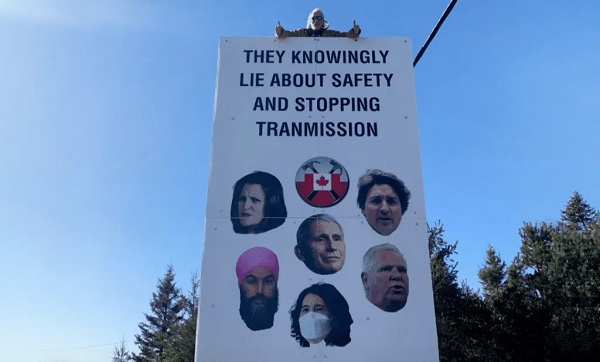
 COVID-192 days ago
COVID-192 days agoOntario man launches new challenge against province’s latest attempt to ban free expression on roadside billboards
-
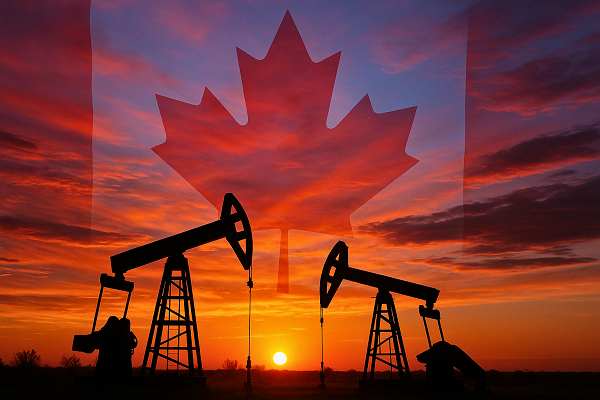
 Energy2 days ago
Energy2 days agoThis Canada Day, Celebrate Energy Renewal
-

 COVID-1918 hours ago
COVID-1918 hours agoNew Peer-Reviewed Study Affirms COVID Vaccines Reduce Fertility
-
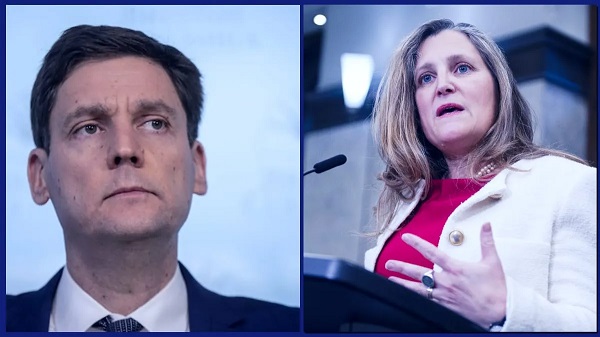
 Business14 hours ago
Business14 hours agoOttawa Funded the China Ferry Deal—Then Pretended to Oppose It
-
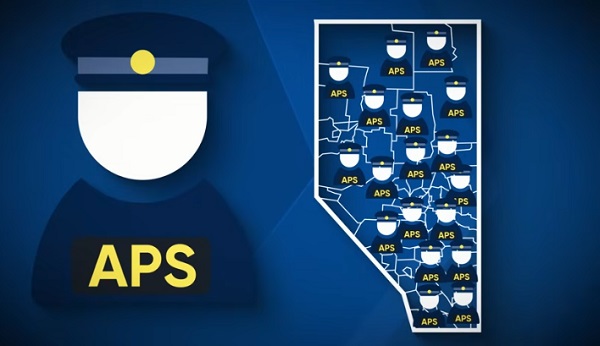
 Alberta2 days ago
Alberta2 days agoAlberta Next Takes A Look At Alberta Provincial Police Force
-

 MAiD16 hours ago
MAiD16 hours agoCanada’s euthanasia regime is not health care, but a death machine for the unwanted
-
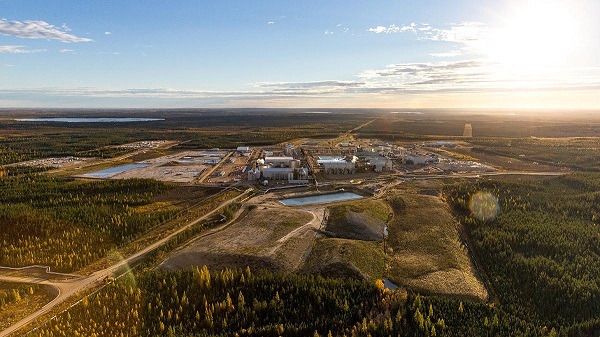
 Alberta2 days ago
Alberta2 days agoCanadian Oil Sands Production Expected to Reach All-time Highs this Year Despite Lower Oil Prices
-
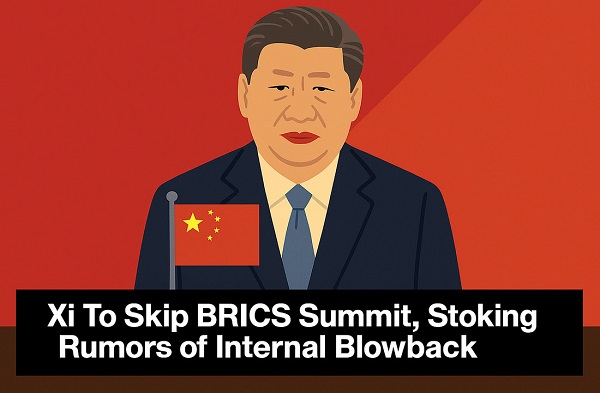
 International2 days ago
International2 days agoPresident Xi Skips Key Summit, Adding Fuel to Ebbing Power Theories




